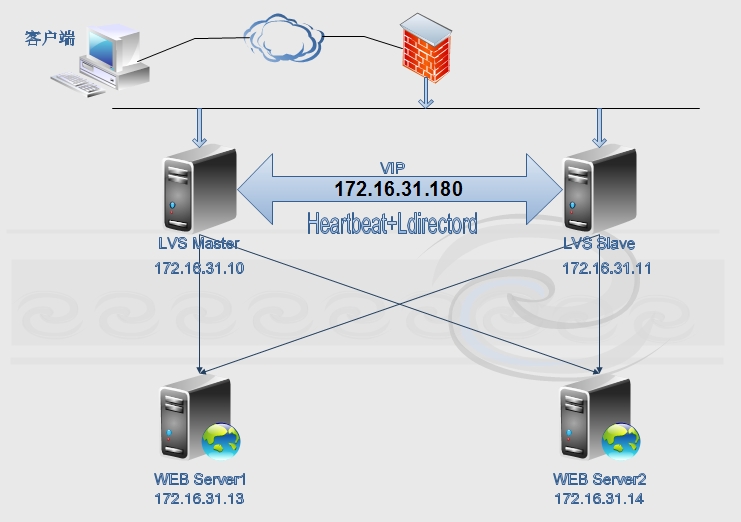
[root@node1 ~]# ssh-keygen -t rsa -P""
[root@node1 ~]# ssh-copy-id -i .ssh/id_rsa.pub root@node2
[root@node2 ~]# ssh-keygen -t rsa -P""
[root@node2 ~]# ssh-copy-id -i .ssh/id_rsa.pub root@node1[root@node1 ~]# cat /etc/hosts
127.0.0.1 localhost localhost.localdomain localhost4 localhost4.localdomain4
::1 localhost localhost.localdomain localhost6 localhost6.localdomain6
172.16.0.1 server.magelinux.com server
172.16.31.10 node1.stu31.com node1
172.16.31.11 node2.stu31.com node2
172.16.31.13 rs1.stu31.com rs1
172.16.31.14 rs2.stu31.com rs2[root@node1 ~]# date;ssh node2 'date'
Sun Jan 4 17:57:51 CST 2015
Sun Jan 4 17:57:50 CST 2015[root@node1 heartbeat2]# ls
heartbeat-2.1.4-12.el6.x86_64.rpm
heartbeat-gui-2.1.4-12.el6.x86_64.rpm
heartbeat-stonith-2.1.4-12.el6.x86_64.rpm
heartbeat-ldirectord-2.1.4-12.el6.x86_64.rpm
heartbeat-pils-2.1.4-12.el6.x86_64.rpm[root@node1 heartbeat2]# yum install -ynet-snmp-libs libnet PyXML[root@node1 heartbeat2]# rpm -ivh heartbeat-2.1.4-12.el6.x86_64.rpm heartbeat-stonith-2.1.4-12.el6.x86_64.rpm heartbeat-pils-2.1.4-12.el6.x86_64.rpm heartbeat-gui-
2.1.4-12.el6.x86_64.rpm heartbeat-ldirectord-2.1.4-12.el6.x86_64.rpm
error: Failed dependencies:
ipvsadm is needed by heartbeat-ldirectord-2.1.4-12.el6.x86_64
perl(Mail::Send) is needed by heartbeat-ldirectord-2.1.4-12.el6.x86_64# yum -y install ipvsadm perl-MailTools perl-TimeDate# rpm -ivh heartbeat-2.1.4-12.el6.x86_64.rpm heartbeat-stonith-2.1.4-12.el6.x86_64.rpm heartbeat-pils-2.1.4-12.el6.x86_64.rpm heartbeat-gui-2.1.4-12.el6.x86_64.rpm
heartbeat-ldirectord-2.1.4-12.el6.x86_64.rpm
Preparing... ###########################################[100%]
1:heartbeat-pils ########################################### [ 20%]
2:heartbeat-stonith ########################################### [ 40%]
3:heartbeat ########################################### [ 60%]
4:heartbeat-gui ########################################### [ 80%]
5:heartbeat-ldirectord ########################################### [100%][root@node1 heartbeat2]# rpm -ql heartbeat-ldirectord
/etc/ha.d/resource.d/ldirectord
/etc/init.d/ldirectord
/etc/logrotate.d/ldirectord
/usr/sbin/ldirectord
/usr/share/doc/heartbeat-ldirectord-2.1.4
/usr/share/doc/heartbeat-ldirectord-2.1.4/COPYING
/usr/share/doc/heartbeat-ldirectord-2.1.4/README
/usr/share/doc/heartbeat-ldirectord-2.1.4/ldirectord.cf
/usr/share/man/man8/ldirectord.8.gz[root@node1 ha.d]# vim /etc/rsyslog.conf
#添加如下行:
local0.* /var/log/heartbeat.log
拷贝一份到node2:
[root@node1 ha.d]# scp /etc/rsyslog.confnode2:/etc/rsyslog.conf[root@node1 ha.d]# cd /usr/share/doc/heartbeat-2.1.4/
[root@node1 heartbeat-2.1.4]# cp authkeysha.cf /etc/ha.d/[root@node1 ha.d]# grep -v ^# /etc/ha.d/ha.cf
logfacility local0
mcast eth0 225.231.123.31 694 1 0
auto_failback on
node node1.stu31.com
node node2.stu31.com
ping 172.16.0.1
crm on[root@node1 ha.d]# vim authkeys
auth 2
2 sha1 password[root@node1 ha.d]# scp authkeys ha.cf node2:/etc/ha.d/
authkeys 100% 675 0.7KB/s 00:00
ha.cf 100% 10KB 10.4KB/s 00:00
[root@node1 ha.d]#[root@rs1 ~]# cat rs.sh
#!/bin/bash
vip=172.16.31.180
interface="lo:0"
case $1 in
start)
echo 2 > /proc/sys/net/ipv4/conf/all/arp_announce
echo 2 > /proc/sys/net/ipv4/conf/lo/arp_announce
echo 1 > /proc/sys/net/ipv4/conf/lo/arp_ignore
echo 1 > /proc/sys/net/ipv4/conf/all/arp_ignore
ifconfig $interface $vip broadcast $vip netmask 255.255.255.255 up
route add -host $vip dev $interface
;;
stop)
echo 0 > /proc/sys/net/ipv4/conf/all/arp_announce
echo 0 > /proc/sys/net/ipv4/conf/lo/arp_announce
echo 0 > /proc/sys/net/ipv4/conf/lo/arp_ignore
echo 0 > /proc/sys/net/ipv4/conf/all/arp_ignore
ifconfig $interface down
;;
status)
if ficonfig lo:0 |grep $vip &>/dev/null; then
echo "ipvs isrunning."
else
echo "ipvs isstopped."
fi
;;
*)
echo "Usage 'basename $0 start|stop|status"
exit 1
;;
esac[root@rs1 ~]# echo "rs1.stu31.com" > /var/www/html/index.html
[root@rs2 ~]# echo "rs2.stu31.com" > /var/www/html/index.html[root@rs1 ~]# service httpd start
Starting httpd: [ OK ]
[root@rs1 ~]# curl http://172.16.31.13
rs1.stu31.com
[root@rs2 ~]# service httpd start
Starting httpd: [ OK ]
[root@rs2 ~]# curl http://172.16.31.14
rs2.stu31.com# service httpd stop
# chkconfig httpd off[root@node1 ~]# ifconfig eth0:0 172.16.31.180 broadcast 172.16.31.180 netmask 255.255.255.255 up
[root@node1 ~]# route add -host 172.16.31.180 dev eth0:0
[root@node1 ~]# ipvsadm -C
[root@node1 ~]# ipvsadm -A -t 172.16.31.180:80 -s rr
[root@node1 ~]# ipvsadm -a -t 172.16.31.180:80 -r 172.16.31.13 -g
[root@node1 ~]# ipvsadm -a -t 172.16.31.180:80 -r 172.16.31.14 -g
[root@node1 ~]# ipvsadm -L -n
IP Virtual Server version 1.2.1 (size=4096)
Prot LocalAddress:Port Scheduler Flags
-> RemoteAddress:Port Forward Weight ActiveConn InActConn
TCP 172.16.31.180:80 rr
-> 172.16.31.13:80 Route 1 0 0
-> 172.16.31.14:80 Route 1 0 0[root@nfs ~]# curl http://172.16.31.180
rs2.stu31.com
[root@nfs ~]# curl http://172.16.31.180
rs1.stu31.com[root@node1 ~]# ipvsadm -L -n
IP Virtual Server version 1.2.1 (size=4096)
Prot LocalAddress:Port Scheduler Flags
-> RemoteAddress:Port Forward Weight ActiveConn InActConn
TCP 172.16.31.180:80 rr
-> 172.16.31.13:80 Route 1 0 1
-> 172.16.31.14:80 Route 1 0 1[root@node1 ~]# ipvsadm -C
[root@node1 ~]# route del -host 172.16.31.180
[root@node1 ~]# ifconfig eth0:0 down[root@node1 ~]# echo "sorry page fromlvs1" > /var/www/html/index.html
[root@node2 ~]# echo "sorry page fromlvs2" > /var/www/html/index.html[root@node1 ha.d]# service httpd start
Starting httpd: [ OK ]
[root@node1 ha.d]# curl http://172.16.31.10
sorry page from lvs1
[root@node2 ~]# service httpd start
Starting httpd: [ OK ]
[root@node2 ~]# curl http://172.16.31.11
sorry page from lvs2[root@node1 ~]# cd /usr/share/doc/heartbeat-ldirectord-2.1.4/
[root@node1 heartbeat-ldirectord-2.1.4]# ls
COPYING ldirectord.cf README
[root@node1 heartbeat-ldirectord-2.1.4]# cp ldirectord.cf /etc/ha.d[root@node1 ha.d]# grep -v ^# /etc/ha.d/ldirectord.cf
#检测超时
checktimeout=3
#检测间隔
checkinterval=1
#重新载入客户机
autoreload=yes
#real server 宕机后从lvs列表中删除,恢复后自动添加进列表
quiescent=yes
#监听VIP地址80端口
virtual=172.16.31.180:80
#真正服务器的IP地址和端口,路由模式
real=172.16.31.13:80 gate
real=172.16.31.14:80 gate
#如果RS节点都宕机,则回切到本地环回口地址
fallback=127.0.0.1:80 gate
#服务是http
service=http
#保存在RS的web根目录并且可以访问,通过它来判断RS是否存活
request=".health.html"
#网页内容
receive="OK"
#调度算法
scheduler=rr
#persistent=600
#netmask=255.255.255.255
#检测协议
protocol=tcp
#检测类型
checktype=negotiate
#检测端口
checkport=80[root@rs1 ~]# echo "OK" > /var/www/html/.health.html
[root@rs2 ~]# echo "OK" > /var/www/html/.health.html[root@node1 ha.d]# scp ldirectord.cf node2:/etc/ha.d/
ldirectord.cf 100% 7553 7.4KB/s 00:00[root@node1 ha.d]# service heartbeat start;ssh node2 'service heartbeat start'
Starting High-Availability services:
Done.
Starting High-Availability services:
Done.[root@node1 ha.d]# ss -tunl |grep 5560
tcp LISTEN 0 10 *:5560 *:*[root@node1 ~]# echo oracle |passwd --stdin hacluster
Changing password for user hacluster.
passwd: all authentication tokens updatedsuccessfully.[root@nfs ~]# curl http://172.16.31.180
rs2.stu31.com
[root@nfs ~]# curl http://172.16.31.180
rs1.stu31.com[root@node2 ~]# ipvsadm -L -n
IP Virtual Server version 1.2.1 (size=4096)
Prot LocalAddress:Port Scheduler Flags
-> RemoteAddress:Port Forward Weight ActiveConn InActConn
TCP 172.16.31.180:80 rr
-> 172.16.31.13:80 Route 1 0 1
-> 172.16.31.14:80 Route 1 0 1[root@rs1 ~]# cd /var/www/html/
[root@rs1 html]# mv .health.html a.html
[root@rs2 ~]# cd /var/www/html/
[root@rs2 html]# mv .health.html a.html[root@nfs ~]# curl http://172.16.31.180
sorry page from lvs2[root@node2 ~]# ipvsadm -L -n
IP Virtual Server version 1.2.1 (size=4096)
Prot LocalAddress:Port Scheduler Flags
-> RemoteAddress:Port Forward Weight ActiveConn InActConn
TCP 172.16.31.180:80 rr
-> 127.0.0.1:80 Local 1 0 1
-> 172.16.31.13:80 Route 0 0 0
-> 172.16.31.14:80 Route 0 0 0[root@rs1 html]# mv a.html .health.html
[root@rs2 html]# mv a.html .health.html[root@nfs ~]# curl http://172.16.31.180
rs2.stu31.com
[root@nfs ~]# curl http://172.16.31.180
rs1.stu31.com[root@node2 ~]# ipvsadm -L -n
IP Virtual Server version 1.2.1 (size=4096)
Prot LocalAddress:Port Scheduler Flags
-> RemoteAddress:Port Forward Weight ActiveConn InActConn
TCP 172.16.31.180:80 rr
-> 172.16.31.13:80 Route 1 0 1
-> 172.16.31.14:80 Route 1 0 1[root@nfs ~]# curl http://172.16.31.180
rs2.stu31.com
[root@nfs ~]# curl http://172.16.31.180
rs1.stu31.com[root@node1 ~]# ipvsadm -L -n
IP Virtual Server version 1.2.1 (size=4096)
Prot LocalAddress:Port Scheduler Flags
-> RemoteAddress:Port Forward Weight ActiveConn InActConn
TCP 172.16.31.180:80 rr
-> 172.16.31.13:80 Route 1 0 1
-> 172.16.31.14:80 Route 1 0 1最后
以上就是大方电脑最近收集整理的关于利用heartbeat的ldirectord实现ipvs的高可用集群构建的全部内容,更多相关利用heartbeat内容请搜索靠谱客的其他文章。
本图文内容来源于网友提供,作为学习参考使用,或来自网络收集整理,版权属于原作者所有。



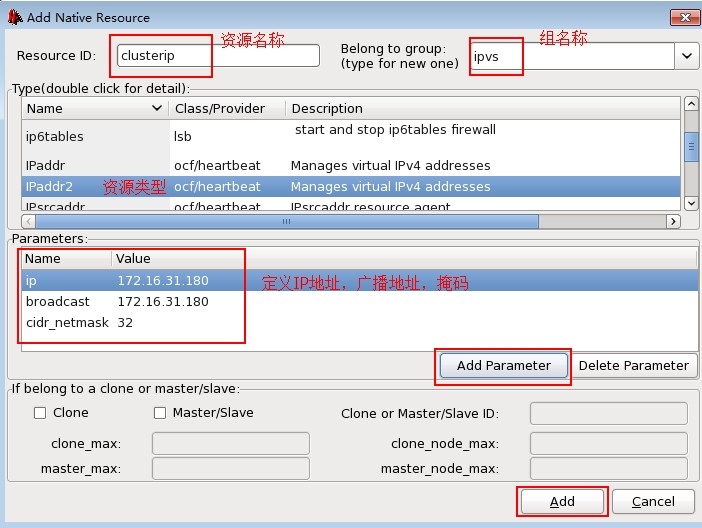
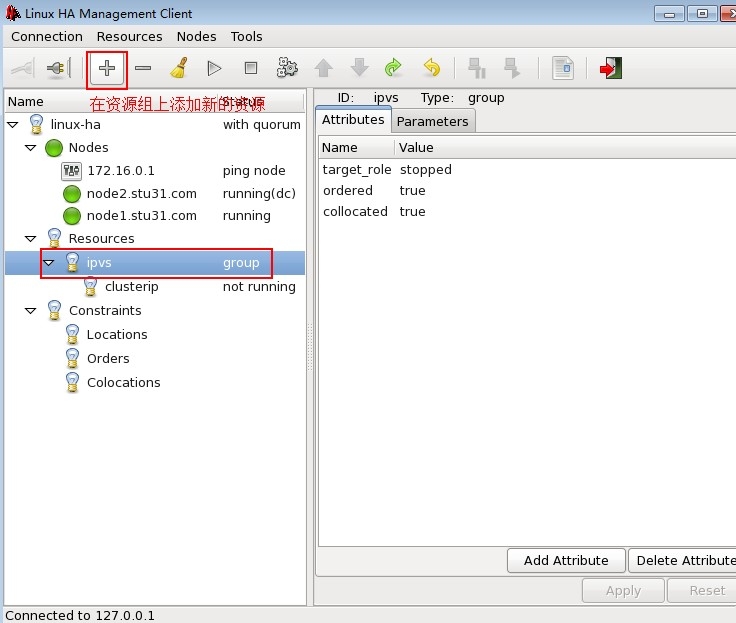

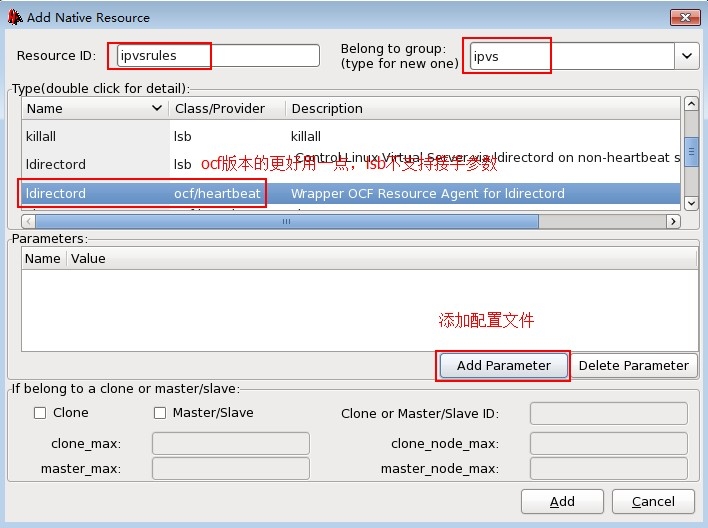
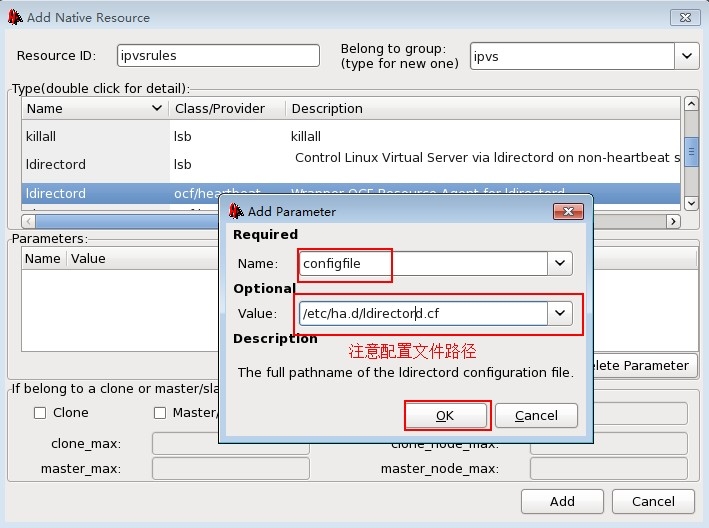
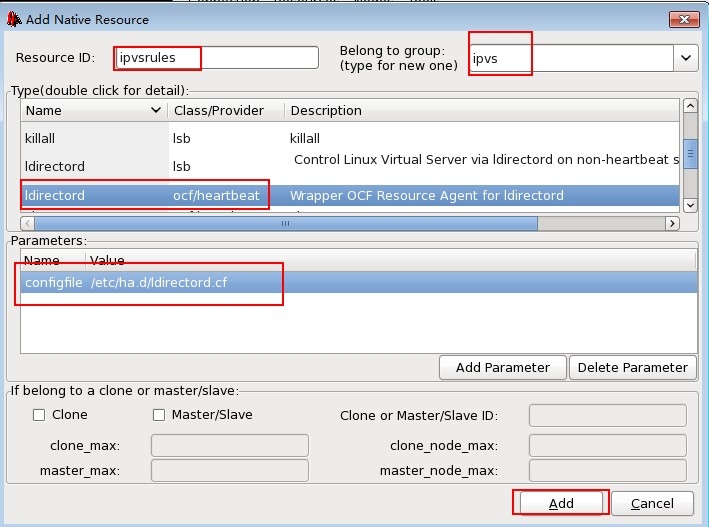

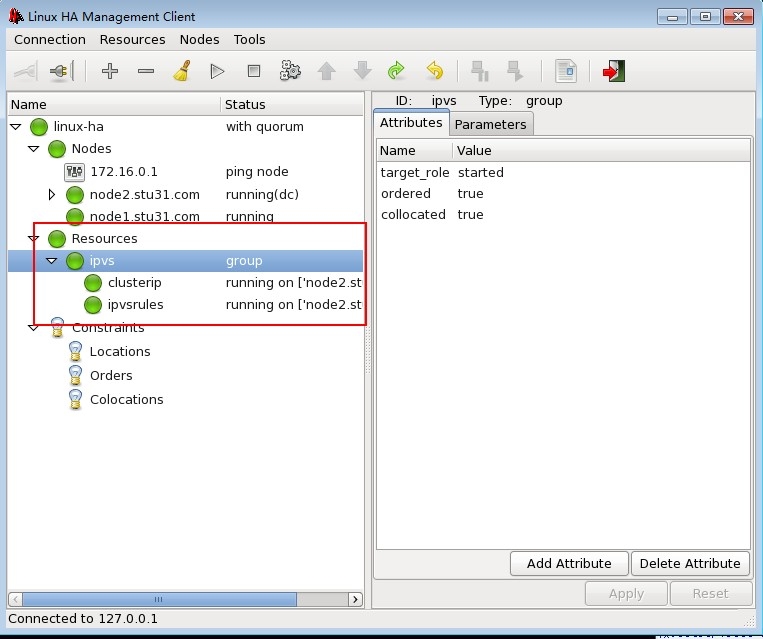
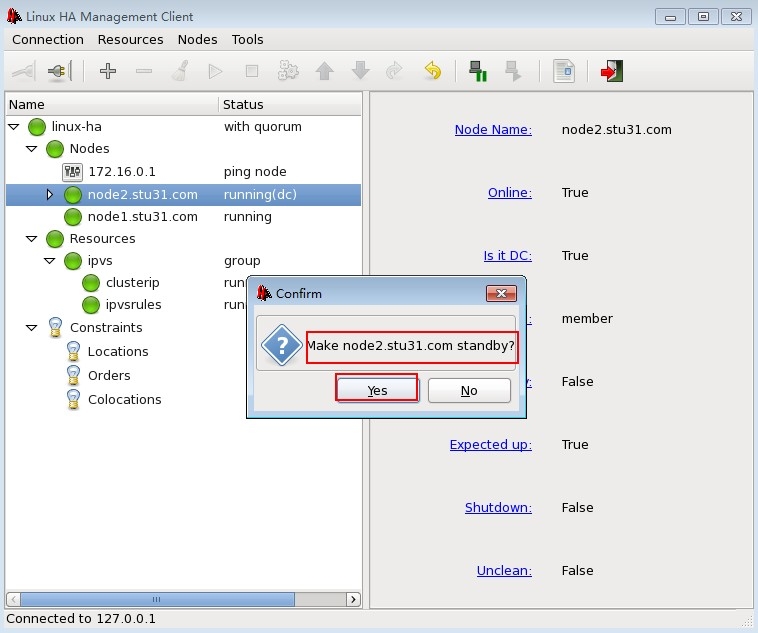
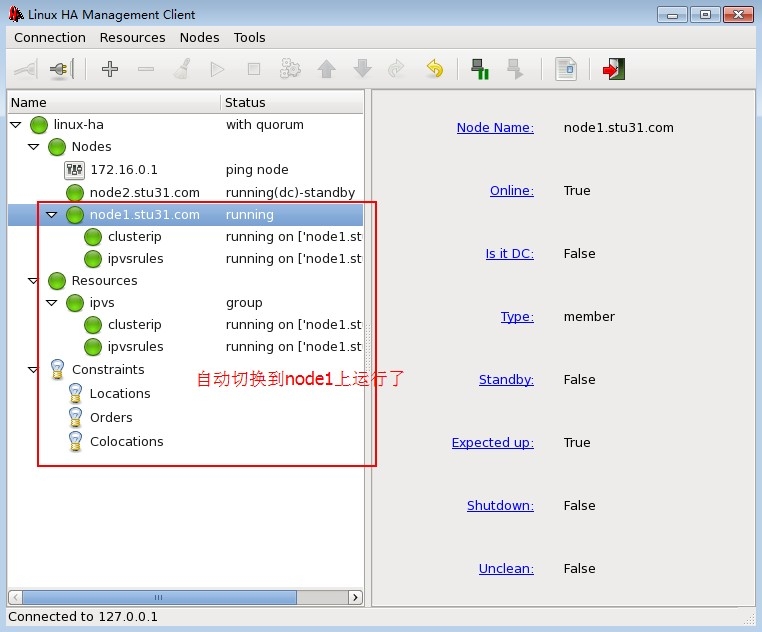








发表评论 取消回复